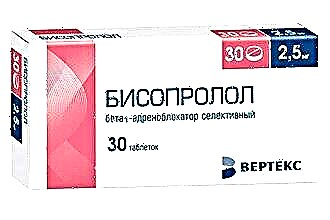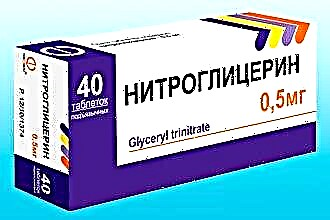Otitis media is a pathology most characteristic of preschool children, the main symptom of which is ear pain. Diagnosis and, consequently, the timely appointment of treatment in a newborn child is complicated by the fact that, due to his age, he cannot present complaints and indicate the place of the disease.

Otitis media in infants can be determined by increased pain when pressing on the tragus.
It is this symptom that turns out to be important for the diagnosis of the disease in infants. In addition, the following factors testify in favor of this disease:
- sudden screaming and crying, especially at night;
- an attempt by a child to touch the affected ear with his hand;
- refusal of the child from food, as the sucking movements contribute to increased pain.
Just like in older children and adults, otitis media in infants is most often a complication of ARVI. Consequently, a runny nose, malaise, fever, preceding this disease, are additional symptoms indicating the development of such a complication as acute otitis media.
The value of nasal drops
Therapeutic measures for otitis media should primarily be aimed at improving the patency of the auditory tube.
In this case, mucus from the nasopharynx will not enter the middle ear cavity, causing inflammation. That is why it is so important to use nasal drops that can reduce the swelling of the Eustachian tube. Among the vasoconstrictor nasal drops, the most popular are naphthyzin, galazolin, and sanorin. When using them, it is imperative to pay attention to the dosage, and not to exceed the duration of admission. Otherwise, addiction develops to the drugs, and the effect may be the opposite of what is expected.
In addition, effective treatment of otitis media in an infant includes a whole range of measures aimed at preserving nasal discharge in a liquid state. It is the thickening that leads to a violation of the outflow of mucus from the Eustachian tube and the development of otitis media. For this, the following events are important:
- plentiful drink, which is necessary as an antipyretic, detoxifying agent, and moisturizing the nasopharyngeal mucosa;
- maintaining the air temperature in the room at the level of 18-20 degrees, regular wet cleaning and airing, which also does not allow the nasal mucosa to dry out, which means it prevents the discharge from thickening.

Pain relievers
Otitis media in newborns and infants occurs with severe pain in the ear. To reduce pain, the use of drugs with an analgesic effect is shown. Otitis media in newborns is an indication for the use of paracetamol, the safest of them, which also has anti-inflammatory and antipyretic effects. The existing form of release in the form of suppositories and syrup makes it possible to widely use this agent in infants without resorting to injectable drugs.
As a local treatment, otitis media in an infant is an indication for the appointment of ear drops with analgesic, antiseptic and anti-inflammatory effects. Most often these are Otipax and Otinum drugs. Despite the fact that these ear drops are approved for use from a very young age, their use should take place under the direct supervision of a specialist. Otipax contains a local anesthetic lidocaine, which, on the one hand, helps to reduce pain, on the other, it can be a powerful allergen.
As for Otinum, the danger lies in the presence of a non-steroidal anti-inflammatory drug among its components, which can have a toxic effect on the middle ear with an injured eardrum. The use of ear drops is possible under the direct supervision of an ENT doctor after an otoscopy.
Antibiotic therapy
Due to the peculiarities of the anatomical structure of the organ of hearing, insufficient development of immunity, exudative otitis media can quickly transform into purulent otitis media in an infant. The appearance of a typical symptom, suppuration, indicates a bacterial pathogen in the development of the disease.
The presence of suppuration is a direct indication for the use of antibiotics in the treatment of otitis media.
These can be either ear drops or solutions. Tablet forms, widely used in the treatment of this pathology, are unacceptable due to the child's inability to swallow the pill. For newborns, the drug can be used in the form of a solution or suspension for oral administration. Preference is given to antibiotics from the amoxicillin group, the most active against the causative agents of this disease. Among ear drops for otitis media in a newborn, Tsipromed and Otofa, which contain an antibacterial component, are widespread.
The role of the specialist in diagnosis and treatment
Throughout the course of treatment, the patient needs an otolaryngologist's consultation. This is due to the fact that therapeutic tactics depend not only on the form of otitis media, but also on the integrity of the tympanic membrane. Depending on her condition, the local treatment may vary, which consists in the use of ear drops. Many of the agents needed to treat neonatal otitis media are toxic to the structures of the middle ear. They can only be used to treat otitis externa or in cases where there is no perforation of the tympanic membrane.
The drugs prohibited in the presence of a perforated tympanic membrane include ethyl alcohol, non-steroidal anti-inflammatory drugs, as well as antibiotics gentamicin, kanamycin.
Since the results of an objective examination play an important role in clarifying the diagnosis and prescribing the correct treatment, timely consultation with a specialist is extremely necessary. Correct treatment helps prevent the development of acute suppurative otitis media. Untimely started medical measures can lead to the transition of the disease into a chronic form, the development of such severe complications as meningitis.
First aid for suspected otitis media
Suspicion of otitis media in a newborn is a reason for urgent measures:
- Immediately consult an ENT doctor;
- In cases where an urgent examination by a specialist cannot be carried out, the child needs to drip vasoconstrictor drops into the nose;
- In the presence of severe pain syndrome, general malaise, increased body temperature, it is recommended to use paracetamol in any available form of release;
- Before examination by an otolaryngologist, the use of ear drops is prohibited;
 It is necessary to strictly adhere to the recommendations of a specialist, especially when using antibiotics. The duration of taking these drugs should be at least 7 days, even with a decrease in clinical manifestations during the first two days. Otherwise, there is a risk of the disease becoming chronic.
It is necessary to strictly adhere to the recommendations of a specialist, especially when using antibiotics. The duration of taking these drugs should be at least 7 days, even with a decrease in clinical manifestations during the first two days. Otherwise, there is a risk of the disease becoming chronic.
Purulent otitis media in infants is a difficult pathology for treatment, since it is difficult to decide on the choice of a drug that will be non-toxic for such a patient by age. In this regard, measures for the prevention of ARVI and its effective treatment are of particular relevance.


 It is necessary to strictly adhere to the recommendations of a specialist, especially when using antibiotics. The duration of taking these drugs should be at least 7 days, even with a decrease in clinical manifestations during the first two days. Otherwise, there is a risk of the disease becoming chronic.
It is necessary to strictly adhere to the recommendations of a specialist, especially when using antibiotics. The duration of taking these drugs should be at least 7 days, even with a decrease in clinical manifestations during the first two days. Otherwise, there is a risk of the disease becoming chronic.

